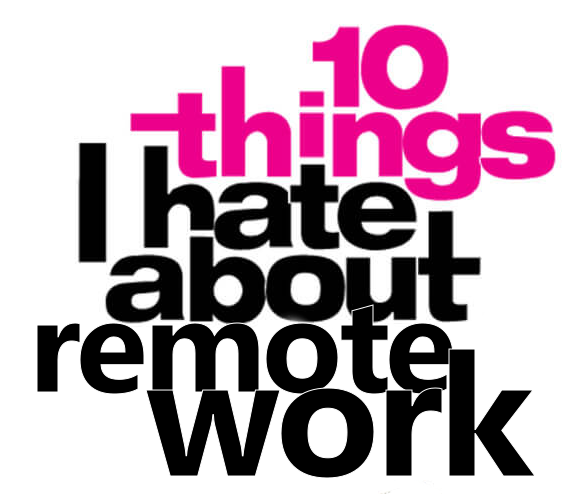20 Ways COVID Made Me a Better Boss
How To Transition to Hybrid Or Remote Work
The COVID epidemic has suddenly forced never-before-seen changes in how we live and work, especially for managers and organizations that are less modern in how they approach regular work. What’s fascinating about it all is that the feelings now felt by organizations around the world of “what should I do when my team cannot leave home?” is the same feeling faced by someone starting a new job or learning a new skill.
The heroes you need are learning professionals. We are here to answer the call.
We at Learn to Scale wanted to provide pragmatic and immediate solutions to your shifting management needs, as well as help employees keep up their morale during a global crisis…or as I like to say, a global opportunity*. These suggestions are targeted at managers, but if you’re an individual contributor you can still suggest these to your leadership as methods to ride the COVID wave to a better organization.
Create a new schedule to capture existing in-person communications in a virtual environment. That obviously includes regular team meetings, company forums, and 1-1s, but also social opportunities (“virtual coffee hour”), COVID status updates (“The Corona Weekly”), and creative outlets (“Friday Beer and Brainstorms”).
Add this question to your regular 1-1s, “How are you feeling about the changes in how we normally operate? Are there things you like or want to change?” Open the door for your team to vocalize how they feel about the changes they’re experiencing from their perspective.
Outline your expectations for your team for the new normal. This includes expectations around sharing information, how to ask for help, the new boundaries for taking individual initiative, and how people should follow-up after a task/project/request is completed.
Help employees who have never worked remote to navigate new challenges such as drawing boundaries between work and home, learning how to use new channels for verbal and written communication, and how to observe working hours when work is at home.
Do an inventory of tech tools to ensure your team has all the relevant access and means to complete their work from home. Ask your team to do a “test drive” and schedule end-of-day syncs to check that the flow of work has no unexpected bumps or band-aids. For fun, make a bounty for whomever can find a normal workflow that cannot be completed at home and send them a small prize.
For organizations that care a lot about security, educate employees about VPNs and how to set them up, protecting sensitive information on home devices, and dangers such as unsecured WiFi and locking workstations in public spaces.
Organize an optional “Wellness at Home” session where the team can discuss ways to stay healthy and balanced at home. Topics to consider addressing: getting physical exercise/moving around regularly, combating isolation and loneliness, removing or minimizing distractions, creating a designated workspace, and reprioritizing responsibilities such as chores or childcare.
Delicately ask employees with children if COVID is impacting their typical workday in regards to childcare. Employees now working from home may also be saddled with children that are not able to take advantage of typical childcare, impacting their ability to do their work. This blog post covers some smart tips. Please be careful with this suggestion and talk to your HR professional how to approach this conversation.
Share financial tips, such as the tax benefits of HSAs and taking advantage of high-deductible health plans for testing and treatment. Don’t stigmatize anyone who does get sick, but encourage them to take time off to convalesce.
Talk about how diseases can perpetrate racial or xenophobic behavior. Address the likelihood of sudden changes triggering stereotyping and reaffirm your organization’s mission and values around such behavior. Code Switch has a good podcast exploring this more in detail.
Curate a Spotify or Soundcloud playlist for employees to listen to as they work from home. Encourage team members to create themed playlists to share. Purchase licenses for employees who want to participate; they’re not that expensive.
Figure out how your team should visually communicate beyond video conferencing. Do you use a particular web-based whiteboard, a feature already available in your video tool of choice, or a special third-party app? Visual communication is a critical form of communication that often gets lost when transitioning remotely.
Encourage people to turn their webcams on. There is a lot of nonverbal communication that gets lost and will exacerbate an already-diminished stream of communication. If employees don’t have a webcam at home, encourage them to join video meetings using their phone cameras.
Create remote events to give employees milestones and things to look forward to. Some suggestions:
Show and Tell Day, where employees showcase something from their home that they want to share with their team.
Video Game Squad Time, where employees who play video games can play together (Apex Legends is hot right now).
Bake-Off Day, where employees can prepare a confection a la the British Bake Off and share recipes.
The Woofing Hour, where employees can show off their pet and tell stories about pets.
Give a high-potential employee the opportunity to analyze typical workflows and find new ways to execute them more efficiently while remote. Encourage them to make a presentation to the team on their findings. Some areas to consider are browser plugins, email hacks, Slackbots/integrations, and automations.
Create a “work-from-home” kit for first-time remote employees. Things to include: charging cables, fuzzy socks, package of ramen noodles, clock timer (for those who want to experiment with the Pomodoro technique), coffee mug, and fidget spinner.
Celebrate employees that are negotiating the change with a “This Is My COVID 2020 Work-From-Home Uniform” apparel. Pajama pants are a good idea for this one.
Outside of however your organization is officially approaching remote communication, poll your team about social platforms such as Twitch, Discord, or Slack and make connections as seem appropriate. Your team might find new ways of connecting with each other!
Collect book and podcast recommendations from the team on a particular topic. Use the stay-at-home opportunity to encourage individual professional development and ease access by paying for an Audible or Kindle subscription for those who opt in. Call it a COVID Book Club.
Issue a work-from-home project for each employee to complete as they see fit to showcase when everyone returns to work. Make it open to interpretation, encourage team members to share their progress, and hype up the return symposium.
Need more tips, policies, and strategies? Stumble into this crowdsourced document around HR policies and strategies and have more information that you could need but hopefully enough that you want.
*The actual health impact on the young, old, and immune-susceptible is no joke. If you are in an officially recognized risk population, please do whatever you can to stay safe and healthy. Stock up on orange juice and skip that birthday party next weekend. Send a nice card, though.








